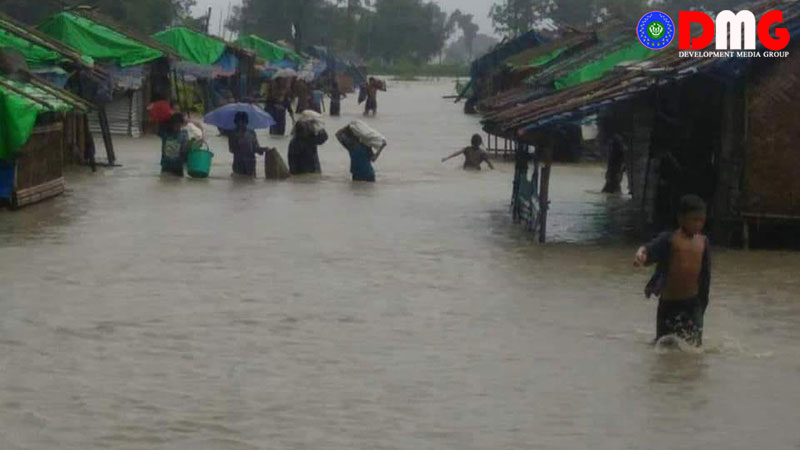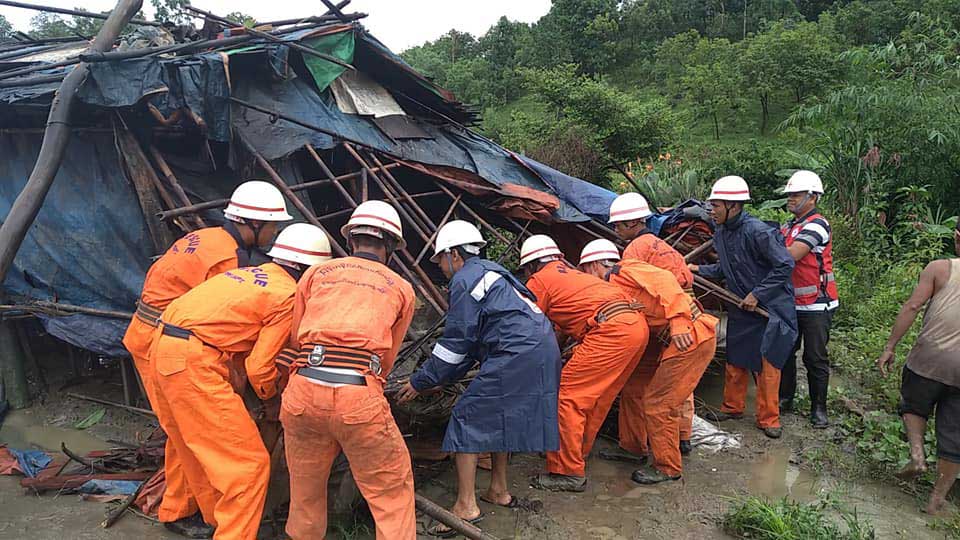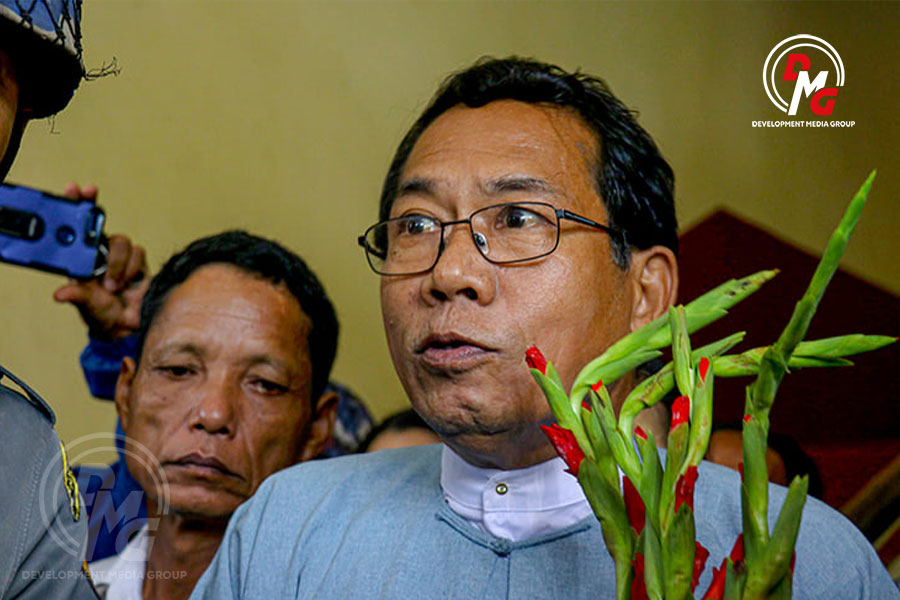- 2025 Review of Arakan State
- Manaung residents hit hard by junta blockade
- How the Arakan Army Can Engage the Yunus Government Amid Myanmar's Election Push, Border Pressures, and a Deepening Arakan Crisis
- Thandwe civilians sleep in bomb shelters amid junta air attacks
- Nearly 900 civilians killed or injured in Arakan State over one year: DMG tally
Heavy rain sinks and destroys houses in Maungdaw
Some wards and villages in Maungdaw Township, Arakan State, have been affected by heavy flooding, and some houses have been destroyed after they sank into the water following torrential rain on September 11, Maungdaw district’s fire station announced.
12 Sep 2019

Wun Tha | DMG
September 12, Maungdaw
Some wards and villages in Maungdaw Township, Arakan State, have been affected by heavy flooding, and some houses have been destroyed after they sank into the water following torrential rain on September 11, Maungdaw district’s fire station announced.
The statement mentioned that Bomhu Ywar, Wimala, Ywar Thit Kay and Aung Myay Bawdi wards in Maungdaw town and Waitharli village, Kanthar Pyinsi village, Ywar Tharyar village and Thiho Aye village were flooded, and some houses were wiped out.
When the firefighters and members of the Red Cross went to Thiho Aye village to check the flood, they found that 24 houses had been flooded and four houses were demolished. The families who lost their homes are staying with relatives nearby.
“Water was 4 feet high yesterday. 24 houses were flooded, and the other houses aren’t good enough and require urgent repairs to their roofs and walls,” said U Nay Aung, who lives in Thiho Aye village.
Watharli village’s administrative officer U San Aung Tun also said that 12 houses in his village were flooded because of heavy water flowing from a nearby mountain, and villagers had to move to a safer place.

“It was heavy rain, and a lot of water flowed down from the mountain. The water level of the creek was high and 12 houses sank into the water. People moved out first and now we are moving their personal belongings,” he said.
The hammering rain sank 24 houses in Thiho Aye village, 5 houses in Ywar Tharyar village, five houses in Kan Pyin Tharsi village, and 12 houses in Waitharli village.
Related Posts :
Lay Myo river water above critical level

















